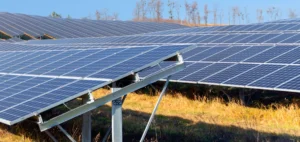Origis Energy and MUFG strengthen their partnership in the renewable energy sector in the United States with a significant $533 million financing. This funding supports two strategic projects contributing to the U.S. energy transition, totaling 350 MW of solar energy and 50 MW of energy storage capacity.
Optimist Solar + Storage: A key project for Mississippi
The Optimist Solar + Storage project, located in Clay County, Mississippi, represents a major advancement in energy infrastructure. With 200 MW of solar capacity paired with 50 MW of storage, it aims to stabilize local energy supply. The project is scheduled to be operational by the end of 2025.
In addition to providing clean energy, the storage component plays a crucial role by ensuring flexibility to meet peak demand. This enhances grid resilience and supports decarbonization efforts.
Wheatland Solar: An initiative for Indiana
In Knox County, Indiana, the Wheatland Solar project focuses on 150 MW of solar capacity. Scheduled to begin operations in 2026, this project will power thousands of households while reducing carbon emissions associated with conventional electricity production.
These two projects highlight the role of private investments in building energy infrastructure capable of meeting national climate objectives.
Strategic financing in the context of the energy transition
The partnership between Origis Energy and MUFG reflects a strategic approach aimed at addressing growing energy needs while adhering to environmental imperatives. The mobilized funds demonstrate the increasing importance of renewable energy for institutional investors.
These projects also align with U.S. policies that strongly encourage clean infrastructure through incentives and public-private partnerships.
Legal support and perspectives
For this financing, Origis Energy was advised by the law firm Latham & Watkins, while MUFG received counsel from Milbank LLP and Baker Donelson. The involvement of legal experts underscores the complexity and strategic importance of such projects.
With initiatives like these, the United States is progressing towards resilient energy infrastructure, aligned with national ambitions for emission reductions and economic development.






















